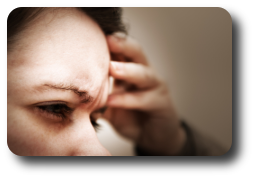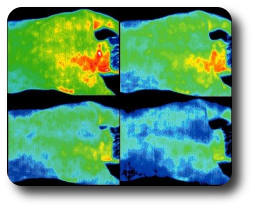Acupuncture and Pain
Acupuncture and Traditional Chinese Medicine have been used in the treatment of pain for centuries. In many parts of China, this was the only form of medicine available, and ancient physicians developed Chinese medicine to a high degree. In fact, in parts of China today, it is still the dominant form of medicine. Acupuncture and Chinese herbs are used in hospitals and medical centers in China, Korea, Japan, Viet Nam and India. One of the most prevalent uses of acupuncture, in particular, is for the treatment of pain.

Since the early 1970's, interest in acupuncture has exploded as an effective treatment for pain and other health problems. Today, numerous research articles support the use of acupuncture for pain, and many American hospitals have integrated it into their services.
How Chinese Medicine Views Pain
In Chinese medicine, pain is the result of stagnation, usually resulting from an imbalance in the body. There are many kinds of pain, both excess and deficient types: Cold pain, Hot pain, Damp pain, Wind pain, pain from Qi stagnation, pain from Blood stagnation and many other diagnoses. Acupuncture, cupping, magnets, Tui Na and Chinese herbs are used to release stagnation, and allow the flow of fluids and Qi, reducing or eliminating pain. It is a holistic approach that incorporates both the cause and effect of pain.
Acupuncture, Pain and the West
Several scientific theories have been offered to explain the effects of acupuncture on pain. In the dominant theory today, acupuncture is thought to decrease pain by increasing the release of chemicals that block pain, called endorphins. In this theory, the stimulation of acupuncture points sends a message to the central nervous system, causing the release of endorphins, morphine-like chemicals produced in the body. These endorphins, along with other neurotransmitters block the message of pain from being delivered up to the brain.

Recently, Yin Lo, a physics PhD, has published a series of studies using infra-red imaging. He has found that areas of the body that are painful will show as "hot" zones on an infra-red image. When acupuncture has been administered to treat the pain, these "hot" zones begin to cool almost immediately, turning from red (hot) to blue (cool) on the images. (Download a PDF of the article)
Where Do the Needles Go?
While the treatment of local points (acupuncture points near where it hurts) may be part of your treatment, other points are often just as important. For left elbow pain, for example, points near the right knee may be used. The selection and combination of acupuncture points to increase their effect is an art, one that requires significant study and years of practice to master.
Acupuncture and Chronic Pain
Acupuncture is most effective at treating chronic pain, such as headaches, menstrual cramps, low back, neck, and muscle pain. It is also used to treat pain from arthritis, facial pain, pain from shingles, chronic abdominal pain, musculoskeletal injuries, fibromyalgia, carpal tunnel syndrome, labor pain, and cancer-related pain. It can also improve the functioning of the immune system.

Acupuncture can also play a part in comprehensive pain management. Many hospices are now using acupuncture, and clinical experience has shown that patients receiving acupuncture require lower dosages of morphine and similar drugs.
Acupuncture and Acute Pain
Acute pain from injuries and illness can be treated effectively with acupuncture and Oriental medicine. However, any acute pain should be evaluated and treated by a medical doctor or hospital before considering acupuncture.
Acupuncture and Chiropractic: A Effective Pairing for Pain
Many U.S. patients receiving acupuncture for musculoskeletal pain are also seeing a chiropractor. This is an excellent pairing: chiropractic treatment adjust and realign the skeletal structure of the body, while acupuncture effectively treats the soft tissues of the body. The two therapies combined often leads to enhanced recovery, and a reduction in the number of both types of treatment required.
If you live on or near the north shore of Massachusetts, for more information about treating pain with acupuncture and Oriental medicine, contact Norman Kraft, L.Ac. at 978-394-4490.
Previous page: Norman Kraft, MTOM, L.Ac.
Next page: Sports Acupuncture

